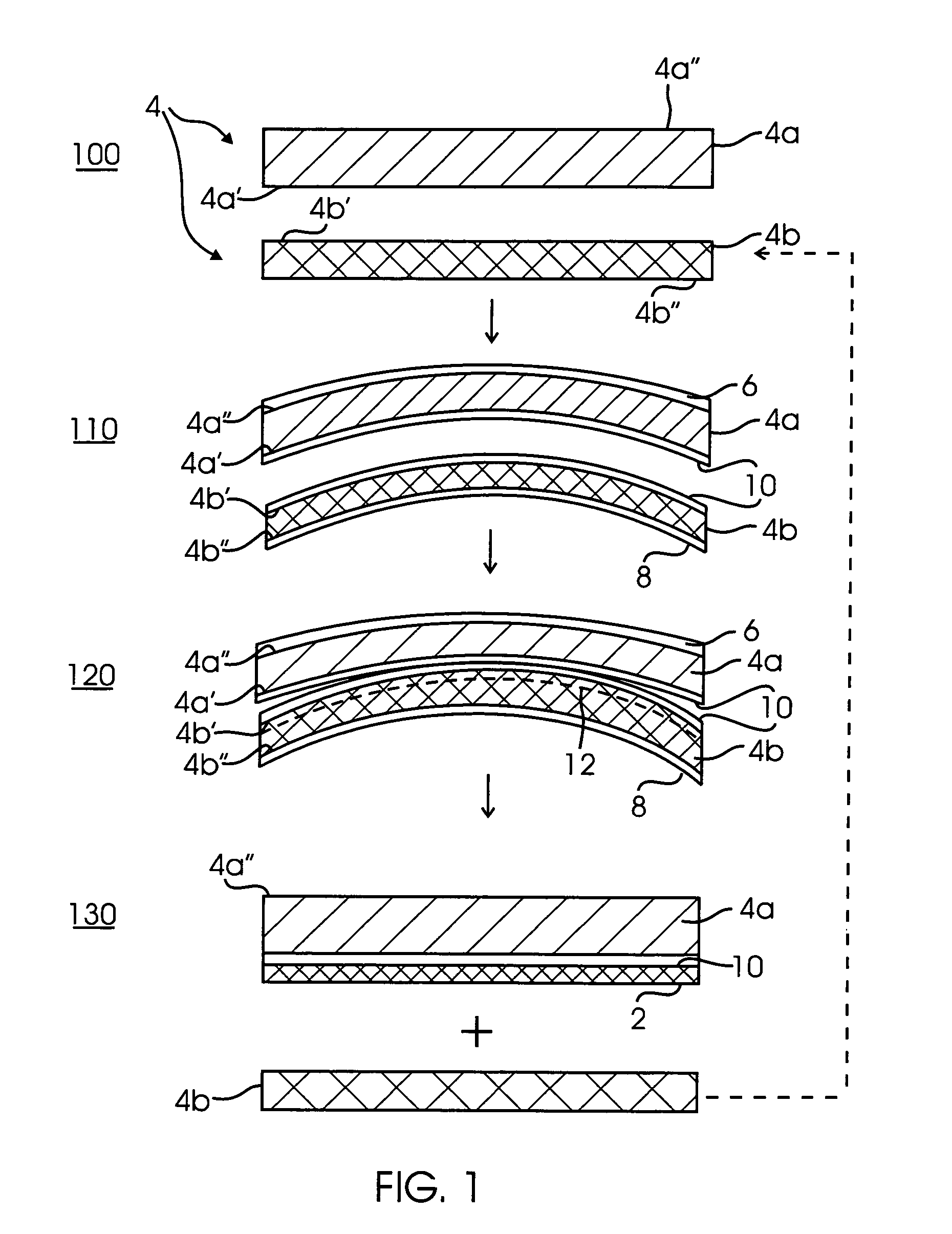Method for producing dislocation-free strained crystalline films
a crystalline film, dislocation-free technology, applied in the direction of basic electric elements, semiconductor/solid-state device manufacturing, electric devices, etc., can solve problems such as affecting the overall performance of the device, and achieve the effect of small thickness
- Summary
- Abstract
- Description
- Claims
- Application Information
AI Technical Summary
Benefits of technology
Problems solved by technology
Method used
Image
Examples
Embodiment Construction
[0022]FIGS. 1 and 2 illustrate two methods for forming a dislocation-free strained silicon thin film 2 on a substrate 4. FIG. 1 illustrates a process for making a tensile-strained silicon thin film 2 while FIG. 2 illustrates a process for making compressively-strained silicon thin film 2. A key advantage of the process described herein is that there are substantially no dislocations formed in the thin film 2. Consequently, the strained film 2 is completely free of dislocations (e.g., threading dislocations) and is very homogeneous. The improved properties of the resultant strained thin film 2 make it particularly useful for incorporation into semiconductor-based devices.
[0023] With reference now to FIG. 1, the process begins (step 100 in FIG. 1) by providing a first substrate 4a and a second substrate 4b. The first and second substrates 4a, 4b may comprise, for example, a silicon substrate in the form of a wafer or the like. Of course other materials other than silicon may be used ...
PUM
 Login to View More
Login to View More Abstract
Description
Claims
Application Information
 Login to View More
Login to View More - R&D
- Intellectual Property
- Life Sciences
- Materials
- Tech Scout
- Unparalleled Data Quality
- Higher Quality Content
- 60% Fewer Hallucinations
Browse by: Latest US Patents, China's latest patents, Technical Efficacy Thesaurus, Application Domain, Technology Topic, Popular Technical Reports.
© 2025 PatSnap. All rights reserved.Legal|Privacy policy|Modern Slavery Act Transparency Statement|Sitemap|About US| Contact US: help@patsnap.com



